Keeping your walls clean is one of the easiest ways to brighten your home and create a fresher atmosphere. Over time, they collect dust, fingerprints, stains, and grime that can dull their appearance. If you’ve ever wondered how to clean walls safely and effectively, the process is simpler than you might think.
Whether you have painted, wallpapered, or tiled walls, using the right cleaning techniques and tools makes all the difference.
Below, we’ll guide you through the best methods to clean your walls step-by-step for spotless, long-lasting results.
1. Prepare Your Cleaning Bucket—The Foundation for Wall Washing Success

Before you start, set up your cleaning bucket with warm water. Having a dedicated bucket for wall cleaning keeps your tools organized and prevents dirty water from spreading grime.
Depending on your wall type and how dirty it is, you can mix mild dishwashing liquid or sugar soap for an effective cleaning solution.
Always test a small area first to ensure it doesn’t damage the paint or finish.
2. Use Dishwashing Liquid for Gentle Wall Cleaning
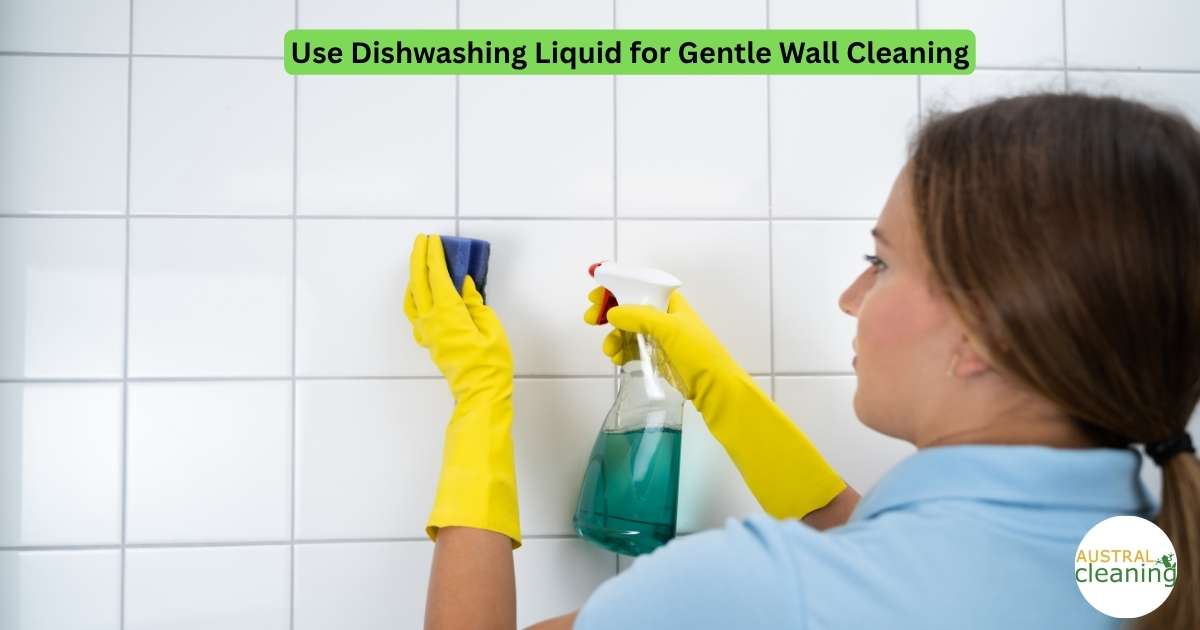
Dishwashing liquid is one of the best and safest products for cleaning walls. A few drops in warm water can cut through grease and remove everyday marks without harming your paint. (Learn how to safely use dish soap on painted walls).
Dip a soft sponge or cloth into the soapy water, wring it out well, and gently wipe your walls in circular motions.
This method is ideal for light stains and regular cleaning. For stubborn spots, let the solution sit for a minute before wiping it away.
3. Remove Stubborn Wall Marks with a Magic Eraser
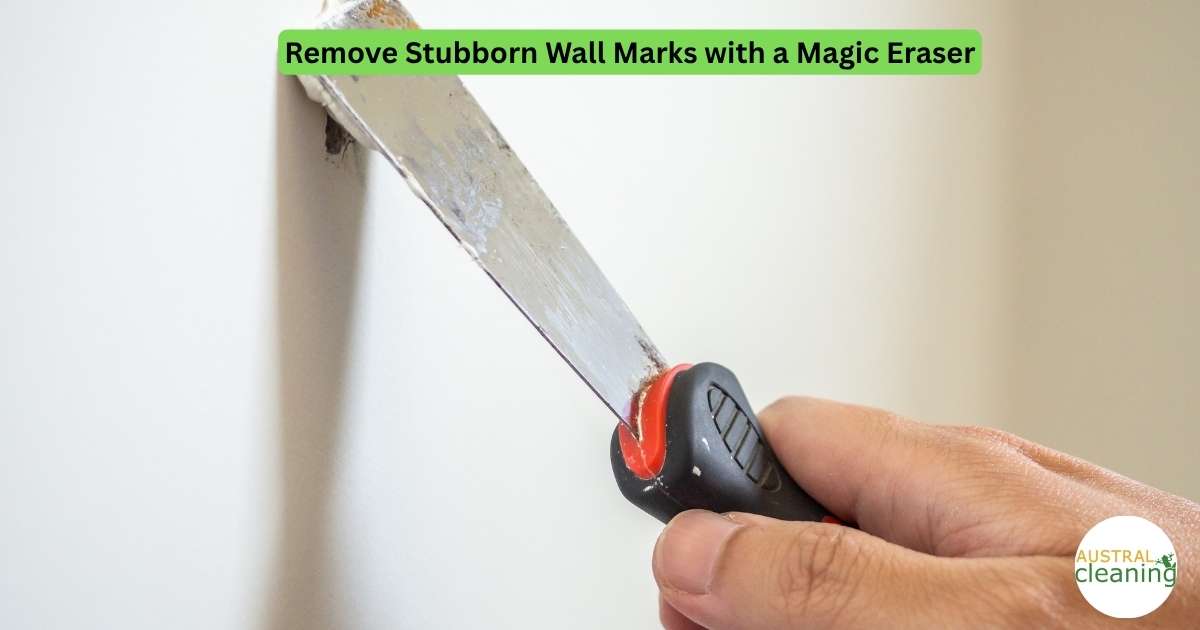
When you encounter tough marks like crayon drawings, shoe scuffs, or fingerprints that won’t go away, a magic eraser can be your best friend.
Simply dampen it slightly and rub the stained area gently (Here’s how to use a magic eraser safely on different surfaces). It works like a charm on most painted surfaces and doesn’t require any additional cleaning solution.
Just be cautious on matte or delicate finishes—always test a small section first to avoid removing paint.
4. Wipe Down Walls with a Microfibre Cloth for a Streak-Free Finish
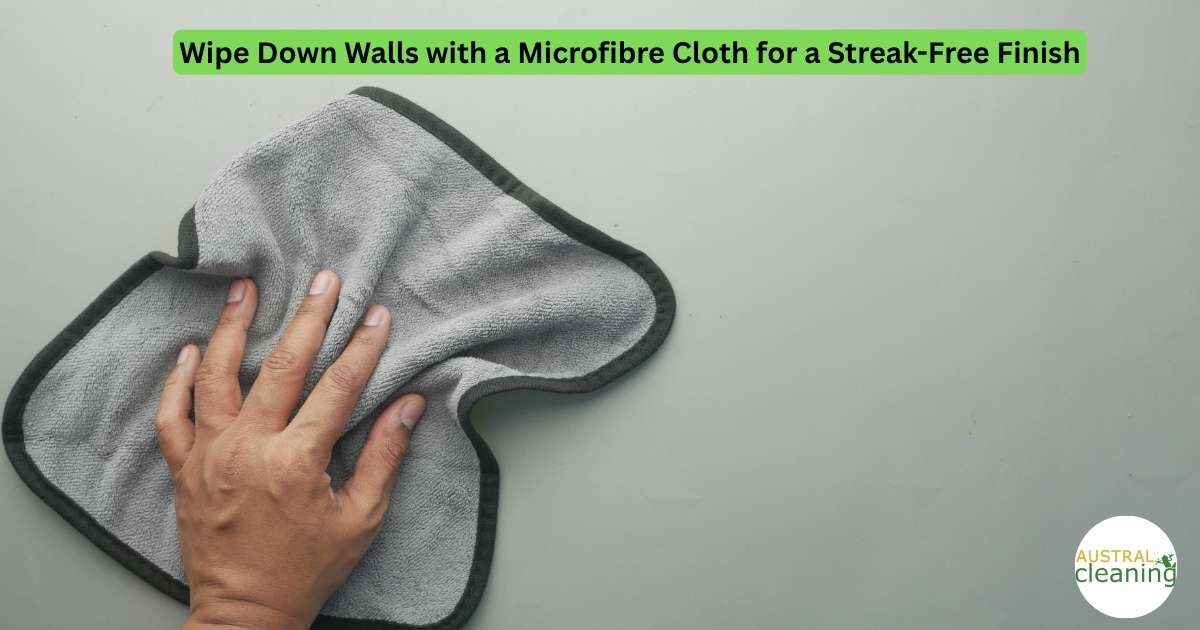
Microfibre cloths are essential for achieving a clean, streak-free finish on your walls. They’re excellent for dusting, wiping, and polishing.
Use a dry microfibre cloth first to remove loose dirt, then switch to a damp one for deeper cleaning.
The ultra-fine fibers trap dirt particles effectively, ensuring that your walls stay spotless and your paint remains intact. They’re especially helpful for cleaning high-gloss or satin finishes.
5. Dry and Buff Walls with Soft Cloths for a Clean Look

After washing your walls, drying them properly is crucial. Leaving moisture behind can lead to streaks or water spots.
Use soft, lint-free cloths—like cotton or microfiber—to gently dry the surface. Buffing the walls with a clean cloth after drying will enhance their shine and leave them looking freshly painted.
6. Tackle Tough Wall Grime with Sugar Soap Wipes
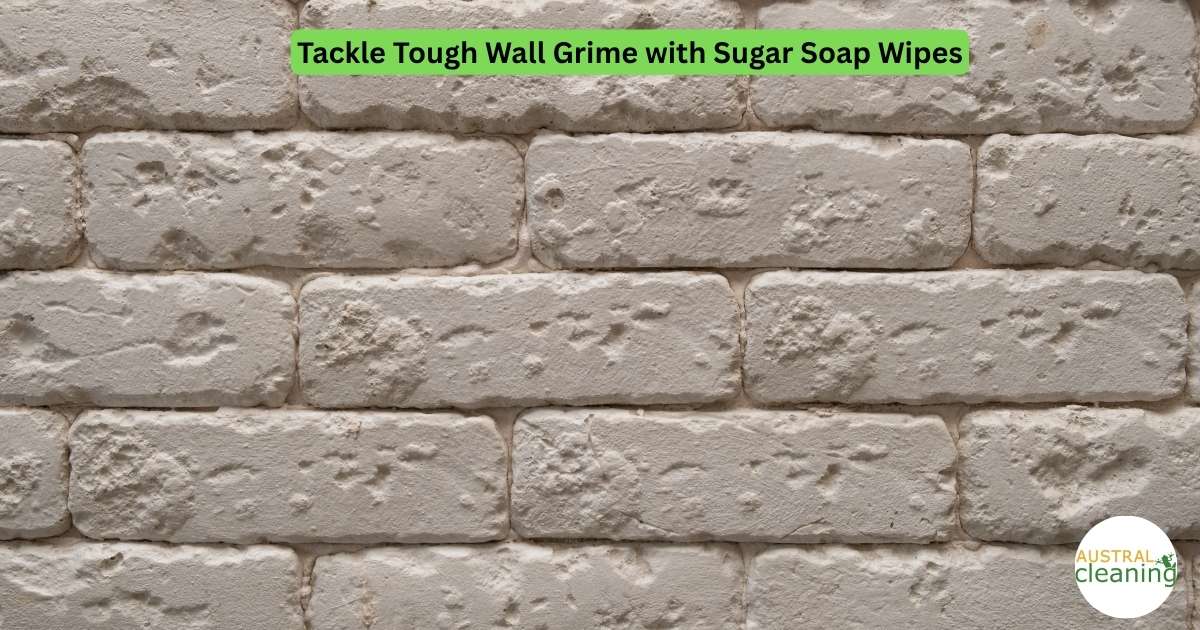
For heavy-duty cleaning, especially in kitchens or areas exposed to smoke and grease, sugar soap wipes are a quick and convenient solution.
They’re pre-moistened and formulated to dissolve stubborn grime, grease, and sticky residue. Simply wipe the area in a circular motion, and you’ll notice the difference instantly. (See how sugar soap helps prepare walls before painting)
Sugar soap wipes are also great for prepping your walls before repainting, ensuring a smooth and clean surface.
7. Identify Common Wall Stains Before Cleaning
Before you begin scrubbing, take a moment to identify the type of stains on your walls. Common wall stains include dust buildup, cooking grease, fingerprints, crayon marks, and mildew.
Knowing what you’re dealing with helps you choose the most suitable cleaning method and products.
For instance, sugar soap works best for greasy walls, while a mild detergent or vinegar solution may handle general dirt.
8. Dust Your Walls First for a Cleaner Finish
Always start by dusting your walls before applying any liquid cleaners. Use a duster, soft broom, or dry microfibre cloth to remove cobwebs and loose dirt from top to bottom.
This simple step prevents smearing dirt across the wall when you start washing, giving you a more professional-looking finish.
Pay special attention to corners, baseboards, and near ceiling fans, where dust tends to gather.
9. Clean General Dirt and Grime with Gentle Solutions
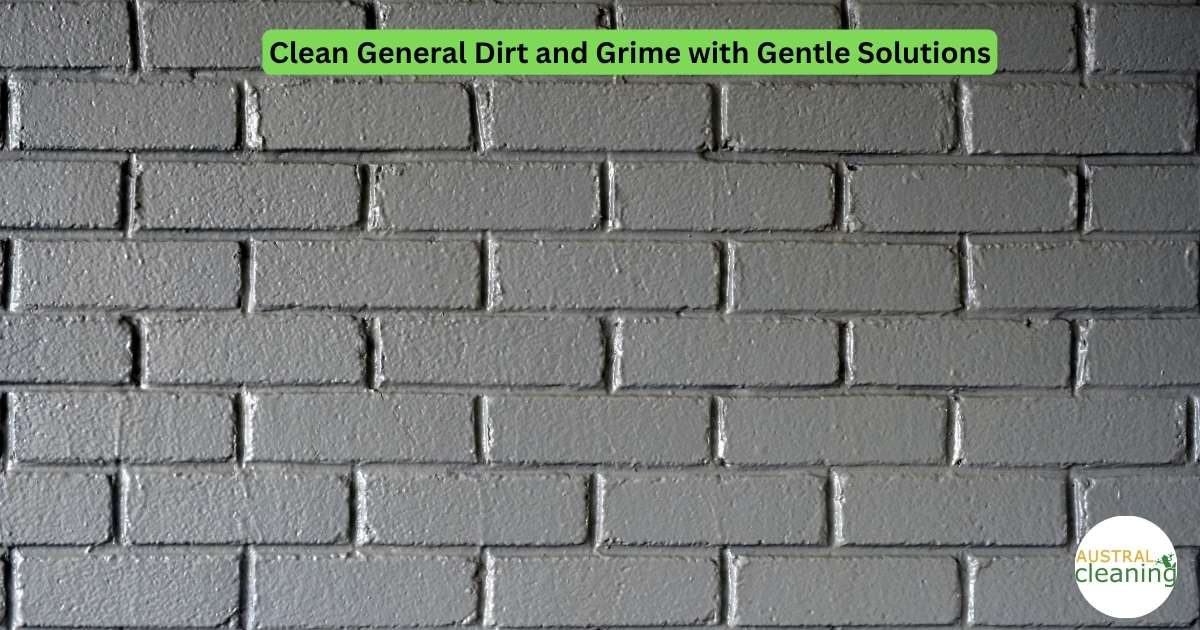
Once your walls are dust-free, you can tackle everyday dirt using gentle cleaning solutions. Mix dishwashing liquid with warm water, soak a cloth, and wring it out before wiping.
Work in small sections, starting from the bottom and moving upward to prevent streaks.
Rinse your cloth frequently and change the water when it gets cloudy to ensure you’re always using a clean solution.
10. Tackle Tougher Wall Grime with Sugar Soap Solutions
If you’re dealing with more serious dirt—like grease from cooking areas or smoke stains—sugar soap is the best solution.
Dilute it according to the package instructions and apply it using a sponge or soft cloth. Let it sit for a few minutes before gently scrubbing and rinsing with clean water.
Sugar soap cuts through tough grime without damaging your wall’s surface, making it ideal for deep cleans or pre-painting preparation.
11. Erase Stubborn Wall Marks Effortlessly with a Magic Eraser
For those frustrating spots that regular cleaning can’t remove, the magic eraser comes to the rescue again.
It’s perfect for high-traffic areas such as hallways, kids’ rooms, or behind furniture where scuff marks often appear.
Dampen the eraser slightly and apply light pressure to avoid removing paint. Its micro-abrasive texture lifts dirt effectively, giving your walls a refreshed and smooth look.
12. Consider Repainting Walls for a Complete Refresh

Sometimes, no amount of cleaning can fully restore the original brightness of your walls—especially if they’re old or stained beyond repair.
In that case, a fresh coat of paint can make all the difference.
Cleaning your walls before painting ensures better adhesion and a smoother finish. If your walls still look tired after cleaning, consider repainting for a complete home refresh.
13. Keep Your Walls Looking Fresh and Spotless Year-Round

Regular wall cleaning is the secret to maintaining a bright and beautiful home. By using the right tools—like a microfibre cloth, magic eraser, and sugar soap—you can easily keep your walls spotless and extend the life of your paintwork.
Make it a habit to dust your walls monthly and deep-clean them every few months to enjoy a clean, fresh atmosphere all year long.
Final Tip: Always test your cleaning solution on a small, hidden section of the wall before applying it widely. Different paints and finishes can react differently, so it’s better to be safe than sorry!

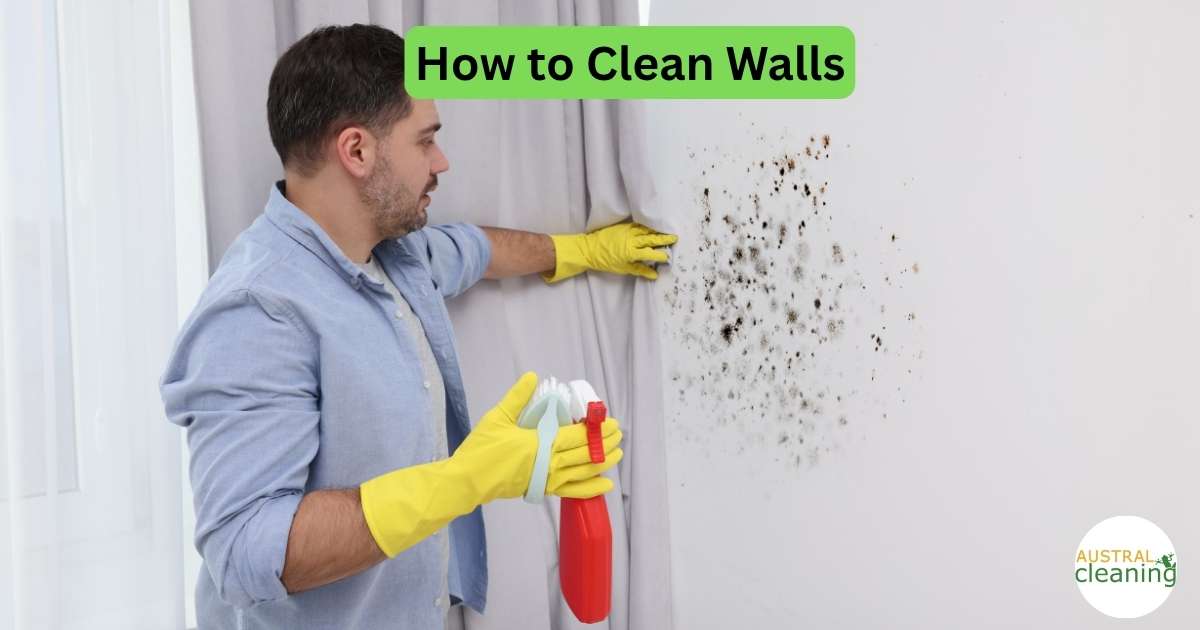
Leave A Comment